
Your budget is the backbone of your travels – it dictates how far you go and for how long, the places you stay, the type of rig you tour in, and the activities you pursue.
RVing is a lifestyle that’s easily adapted to different budgets. You’re largely self-sufficient, so you can tread your own path and choose how you want to travel. But touring with a smaller budget doesn’t mean you have to miss out, either. And this is especially true when it comes to food.
There’s no denying it, eating is essential but it is also expensive and can be one of your biggest costs on the road. But the good news is you can save some serious cash with a few foodie smarts.
BUDGET BUSTING
The idea of a ‘budget’ may send shivers down your spine, but it’s a good way to get a rough idea of what you can afford, and will help you work out how much of your money you should be allocating to food.
Setting a budget means working out what kind of camper you are and the costs you need to factor in. The key is to be realistic – if you know you want a powered site and a wagyu steak five nights a week then budget accordingly.
If a strict budget isn’t for you, at the very least have a vague idea of how much cash you’ve got to spend and how you’re spending it. We tend to live within our means, so you may find your money goes further than you thought.
If you’re on the road for a while, track your spending easily by setting up a weekly direct debit from your savings account to an access account – kind of like paying yourself a touring ‘wage’. And remember, some weeks will be more expensive than others, so don’t be hard on yourself – you’re on holiday, after all.

Pack lunch for travelling days and enjoy it in the great outdoors
THRIFT SHOP
Do a rough meal plan for the week and choose versatile items that work for multiple meals. Cook dishes that will stretch an extra meal or two to get the biggest bang for your buck – think bean burrito mix, a tasty green curry or a pot of minestrone soup.
Be a smart shopper and look for discounts, handy non-perishables such as rice and pasta, and fresh items that have a longer shelf life, such as root vegies, potatoes, cabbage, and harder fruits that are less likely to bruise.
Make an effort to cook your meals rather than eating out in local restaurants or buying expensive take-away food, and keep meals simple – everything tastes better outside, anyway, so you can easily ditch some of the frills.

A bit of flour and water goes a long way and can make a delicious camp oven damper
On travel days, pack a thermos for your daily caffeine hit, and prepare your lunch and snacks in the morning, so you’re set for the day and not tempted to buy them en route.
Make your food last longer and take up less space with some smart storage options. Buy vacuum packed meat, freeze meal-size portions of pre-cooked soup or pasta sauce, and carry a range of airtight, stackable containers or snap lock bags for storing leftovers and keeping food fresh.
DIY DEHYDRATE
A great way to eat well on the road is by cooking bulk meals and dehydrating them before you leave home. This frees up valuable fridge and freezer space in your van, gives you variety in your diet, and saves time cooking at camp after a long day on the road (those times when take-away is most tempting!).
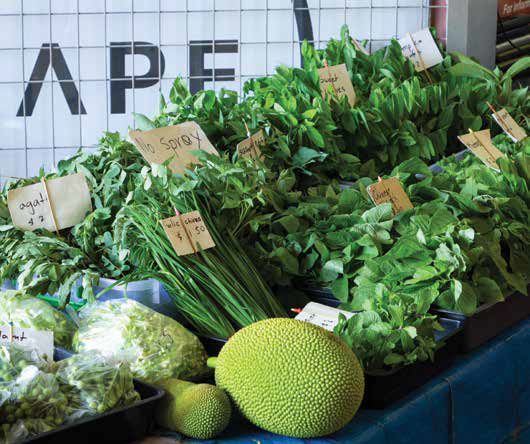
Bag a bargain at community markets
You can dehydrate all sorts of things, from snacks such as dried fruit or jerky, to full-blown meals such as risotto and bolognese. This means you can keep your vegie intake up in places where fresh food isn’t widely available (or just plain expensive). By doing the cooking in advance, you can also scope out specials and purchase items when discounted.
Store your dehydrated food in snap lock bags or containers in your van’s pantry and simply rehydrate meals using water when you’re ready to eat them.
LOCAL INTEL
Local knowledge can go a long way, when it comes to saving a buck. Stop in at the local visitor centre for info on the best deals in town, including any cheap meal nights at local pubs or restaurants, as well as advice on which activities are most worthy of spending your hard earned cash.
If you ask around, friendly locals can also usually point you in the right direction for the best places to do your food shopping, including any upcoming farmers’ markets or their favourite bakery in town, and will sometimes even let you in on the best free camps or fishing spots in the area (a budget-friendly feed in there for sure!).
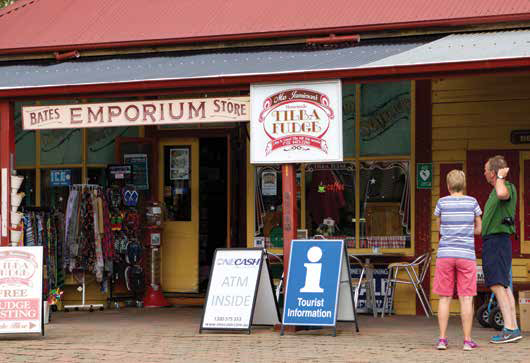
Tourist information outlets should know where the best meal deals in town are
CATCH OF THE DAY
On the topic of fishing, a bit of hunting and gathering can be quite beneficial to your budget. Set yourself up with some basic gear and hit the waterways to (hopefully) reel in your own fishy feast.
If you’re savvy you can find all manner of bait hidden among the rocks and in rock pools, or throw out a line to catch small baitfish, which will save you a trip to the local bait shop.
Cook your catch on the fire and enjoy the unrivalled satisfaction of having caught the meal yourself – all without even pulling out your wallet.
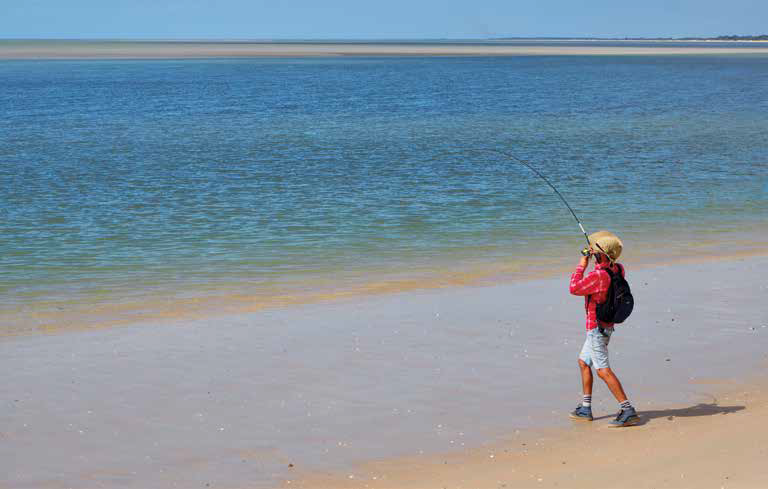
Fishing is a great way to catch your own budget feast
SIMPLE SAVINGS
There are heaps of easy ways you can reduce your costs on the road (and before you leave) for items other than your evening meal that will free up a bit of cash and allow you to enjoy the freedom of the road for longer or, at the very least, go home without a maxed out credit card.

Maintaining a budget means you can stay on the road for longer
CAMP COOK: SWEET TREATS
Dehydrated fruits are great when you’re in remote areas where fresh fruit isn’t easily accessible, plus they’re delicious.
Dehydrate an array of chopped up seasonal fruit before you leave – even better if it has come from your own fruit trees.
On the road, throw the dehydrated fruit in with some nuts or seeds for a homemade trail mix, or add to your muesli or porridge for a delicious fruity twist to your camp breakfast.
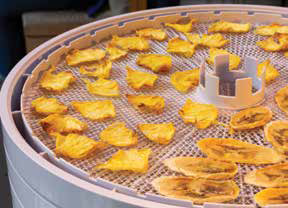
COOK ON THE CHEAP: CAMP OVEN PIZZA
Pizza is an easy favourite, sure to please the troops. It’s also cheap and is a great way to use up any leftover vegies. Make it interesting by topping with minced garlic, anchovies, capers, olives or even a jar of char-grilled vegies.
For the base, mix 1.5 cups of self-raising flour with 1 cup of warm water, 1 tablespoon of oil, and a pinch of salt. Roll your dough into a ball then flatten it out. Depending on how large you want your pizza and how big your camp oven is, this quantity should make a couple of bases. Spread the base with tomato paste or passata and top with vegies and cheese. Sprinkle a bit of flour in the bottom of the camp oven then place the pizza inside.
It may take a bit of trial and error to get your heat and cooking times right for this one. You don’t want too much heat directly underneath the camp oven, as it’ll burn the base, so find a spot in the fire that’s not too hot and then place some coals on the lid for a more even temperature.
Cook for roughly 15-20 minutes or until the base is crispy and the cheese is melted.
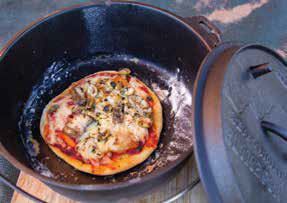
Category: Features
Written: Sat 01 Sep 2018
Printed: September, 2018
Published By: